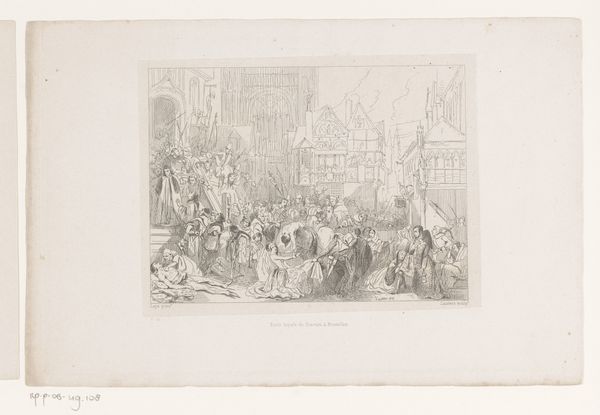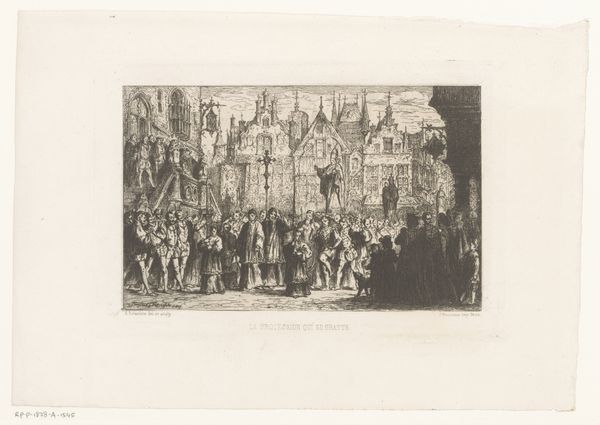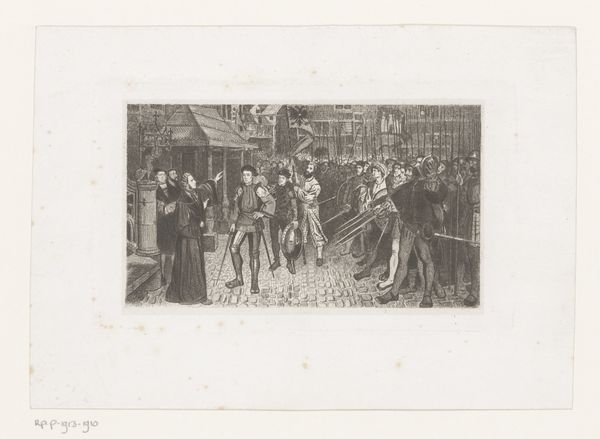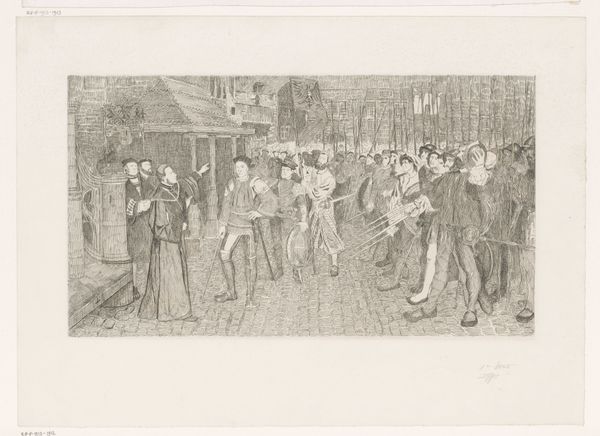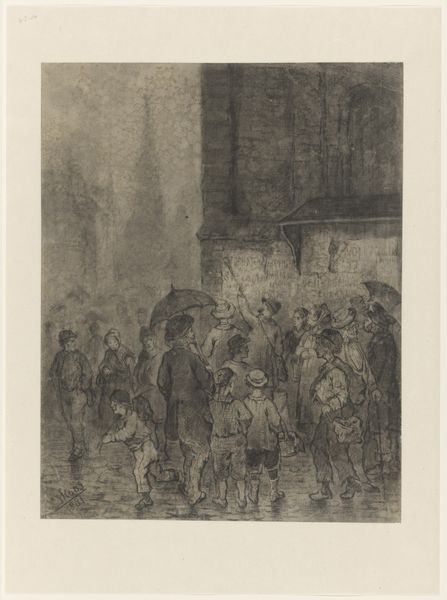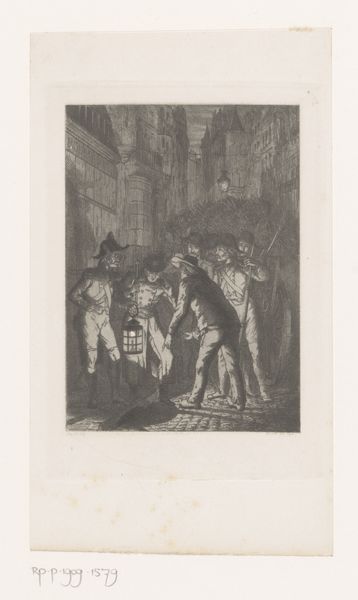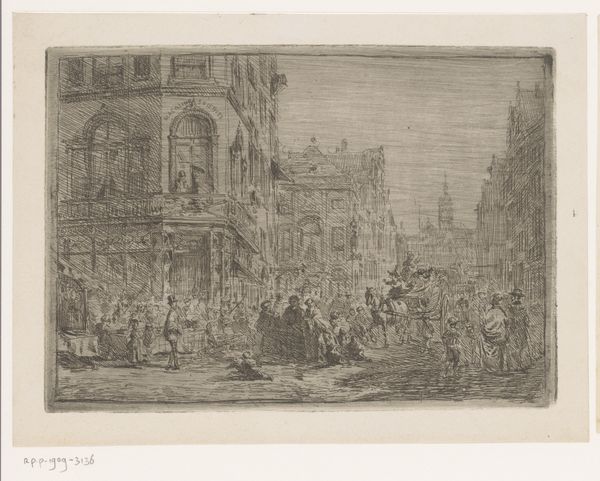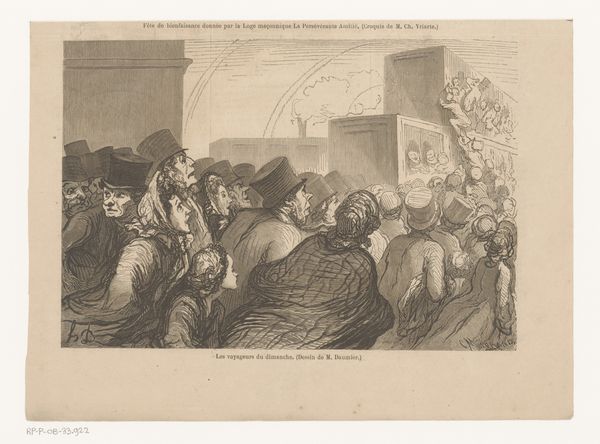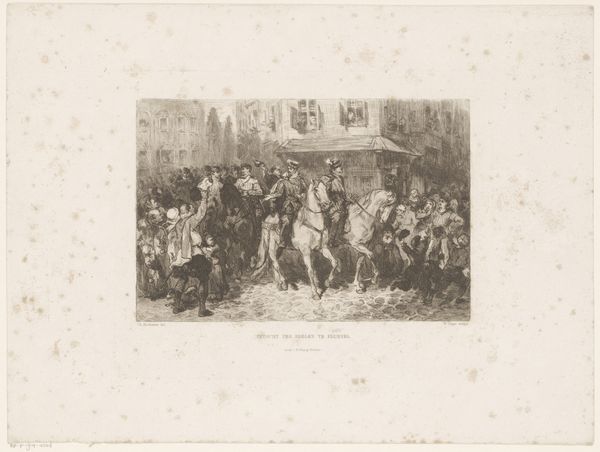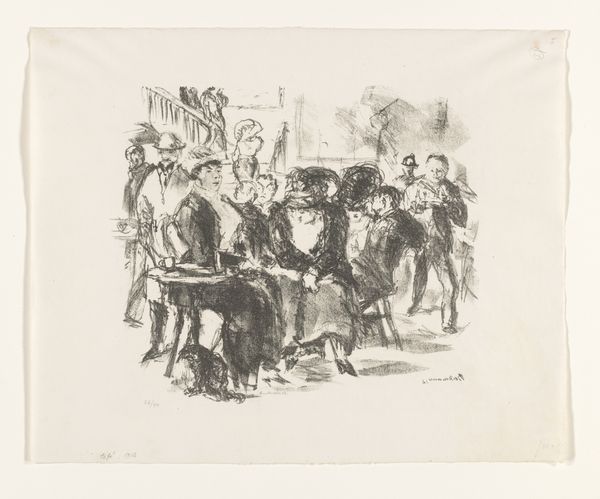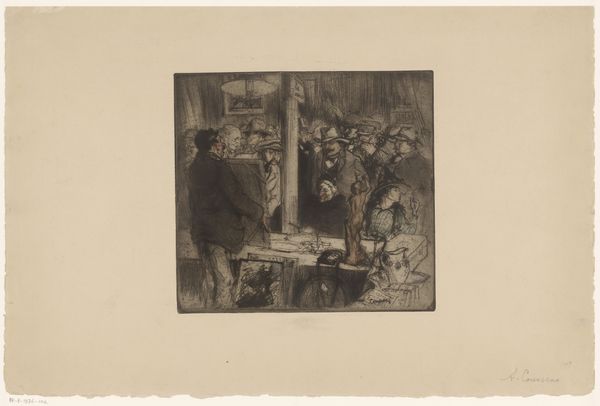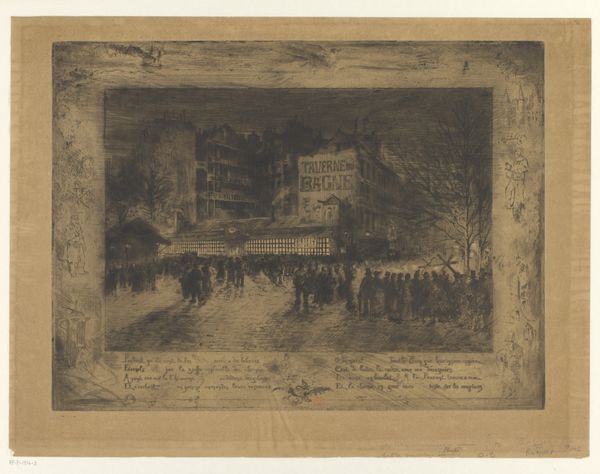
drawing, print, etching
#
drawing
#
medieval
#
narrative-art
# print
#
etching
#
figuration
#
realism
Dimensions: height 182 mm, width 252 mm
Copyright: Rijks Museum: Open Domain
Curator: Today, we’re examining "Vorstelijke begrafenisstoet," an etching and print attributed to Edgar Alfred Baes, likely created between 1847 and 1909. Editor: The somber mood is instantly apparent. It's almost oppressive; the high contrast amplifies the weight of the subject. The small scale adds to the sense of constraint. Curator: Absolutely. Let's delve into its composition. The procession, rendered with meticulous detail, showcases Baes' commitment to realism, despite his interest in medieval themes. See how he uses light and shadow to guide the viewer's eye through the narrative unfolding across the street scene. Editor: What strikes me, however, is how this print makes us think about access. Etchings such as these played a crucial role in distributing imagery; consider the artist, laboring over this small metal plate so that copies of this elaborate ceremony might circulate broadly. Were they attempting to democratize this ‘royal funeral cortege,’ or merely capitalize on public interest in elite spectacle? Curator: An interesting question, certainly. Considering the medium itself, the print serves not merely as a document but also a representation imbued with artistic choices regarding line, texture, and tone that serve symbolic functions here. Observe how Baes contrasts sharply detailed figures against more vaguely rendered architectural elements: foregrounded emotion versus backdrop for circumstance, almost. Editor: Yes, and considering Baes was working during a time of massive industrial change, the very act of creating detailed work, slowly, painstakingly on a metal plate becomes a deliberate, material contrast to mass production techniques. In a way it gives value back to the traditional labor. Curator: An insightful observation! By focusing on those material aspects and relating them to both medium specificity and broad socioeconomic movements of his era, new meaning can come forth concerning his art production at that period. Editor: By emphasizing materiality and artistic technique and relating these elements both medium specifically or wider socioeconomic movements current regarding production in a historical light we may give more light onto artist intentions as regarding their arts processes at time when there had begun modern mass industrial production that challenged hand manufacturing or artisanship's relevance! Curator: In summary, the artistic value of Edgar Baes' art production could be more than at first observed if we think of materiality or methodology used at those periods regarding creation given by its sociopolitical environment's considerations too! Editor: Exactly, which makes contemplating Baes' historical context and methodology as important as examining form itself!
Comments
No comments
Be the first to comment and join the conversation on the ultimate creative platform.
